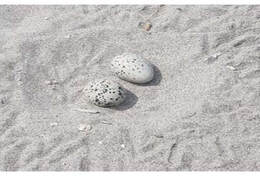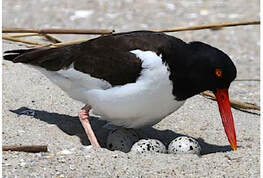|
While you are out fishing, cruising or paddling in the next several months, you might stop to explore one of the many out island beaches of the Cedar Keys. But beware. You may be stepping into a shorebird maternity ward.
Boaters flock to Cedar Keys’ island-dotted waters because they know how special the area is. Shorebirds know this too, as it offers the isolation necessary for nesting. You can include at least four “threatened” shorebird species in that group. The American oystercatcher, for one, has a significant nesting concentration here, one of the largest in Florida. If you are walking an isolated stretch of sand, shorebird nests can be very hard to spot. The average person does not expect to encounter eggs seemingly just lying exposed. And yet, that is where these imperiled shorebird species often lay their eggs. Not in trees or hidden away in the brush but out in the open and on the ground. No elaborate weaving of twigs or sandy mounds. These birds rely on egg camouflage, pretending to be beach debris, to fool predators. It works sometimes to trick raccoons or avian opportunists. But that same blending-in-with-the-beach makes it easy for humans to unknowingly step on eggs. The hatching season generally runs from March through April. After that you have to watch for hatchlings through August. For most of the shorebird species that nest on beaches, there are 2 to 3 eggs, sometimes 4. It can take 20 to 30 days of parents sitting on their eggs to get them to hatch. If a human somehow causes a bird to leave that nest, the eggs could be easily snatched. A watchful winged predator could make a grab in a matter of seconds. Just forcing a bird to leave its eggs exposed to the sun, even for a short time, can cause mortality. Shorebird populations are declining yearly. It’s not just because of human intrusions but also the continuing loss of places where they can nest. Barrier islands are disappearing. Every single nest is critical. So how can beach visitors help?
You don’t even have to set foot on the sand to disrupt nesting. Just coming too close to a nursery area in a watercraft can cause birds to take flight. Like on land, it is important to keep that 300 foot distance. Should you witness deliberate shorebird harassment, please report such activities to FWC’s Wildlife Alert hotline at 888-404-3922. If you want to be actively involved with protecting shore or seabirds, check out flshorebirdalliance.org or contact [email protected] .
0 Comments
Leave a Reply. |
Archives
June 2024
|

Friends of the Lower Suwannee & Cedar Keys National Wildlife Refuges
P. O. Box 532 Cedar Key, FL 32625 [email protected] We are a 501(c)(3) nonprofit organization. |
|

